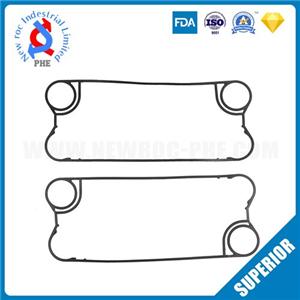The benefits of countercurrent heat transfer in plate heat exchangers
There are generally two types of relative flow directions of fluid in a plate heat exchanger: downward forward flow and upward reverse flow. When the liquid in the plate heat exchanger flows downstream, the temperature difference between the two fluids is very large because of the fast flow rate at the inlet, and the heat transfer surface of the heat exchanger plates along the heat transfer surface gradually decreases, and it is in line with the outlet. The temperature difference is very small. However, when the liquid in the plate heat exchanger flows countercurrently, the temperature difference distribution of the two fluids along the heat transfer surface of the heat exchanger plate is relatively even. Under the premise that the inlet and outlet temperatures of the cold and hot fluids of the equipment are not disordered, when the two fluids have no phase change, the average temperature difference of the plate heat exchanger in counterflow is large.
This shows that under the premise of the same heat transfer of the plate heat exchanger, the counterflow of the plate heat exchanger can increase the average temperature difference, and the heat transfer area of the plate heat exchanger is reduced. If the heat transfer area of the heat exchanger plates is not disordered, the consumption of heating or cooling fluid can be reduced by using reverse flow. The former can save the cost of the plate heat exchanger, and the latter can save the consumption cost of the operation of the plate heat exchanger, so the plate heat exchanger should use countercurrent heat transfer in the design or production.




